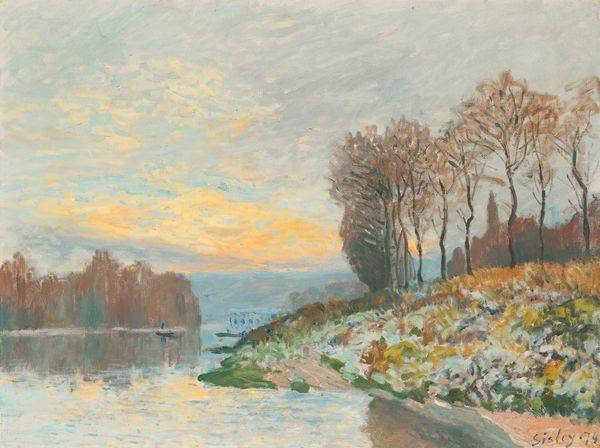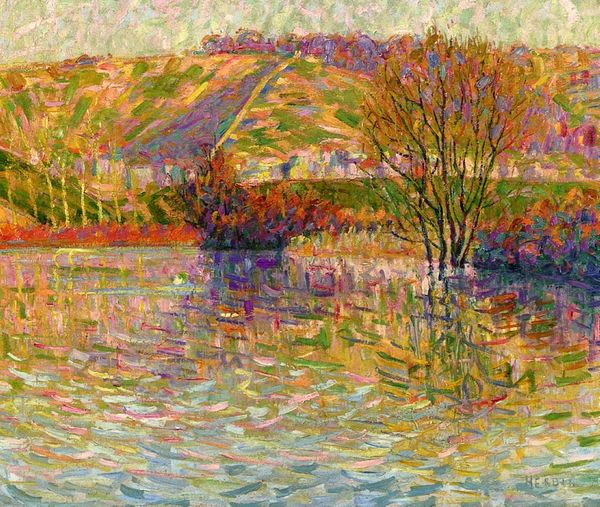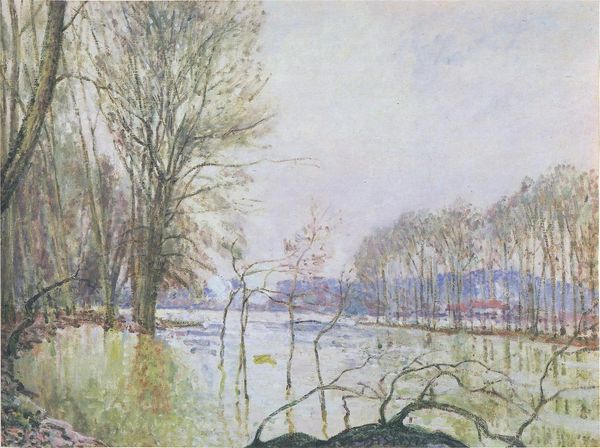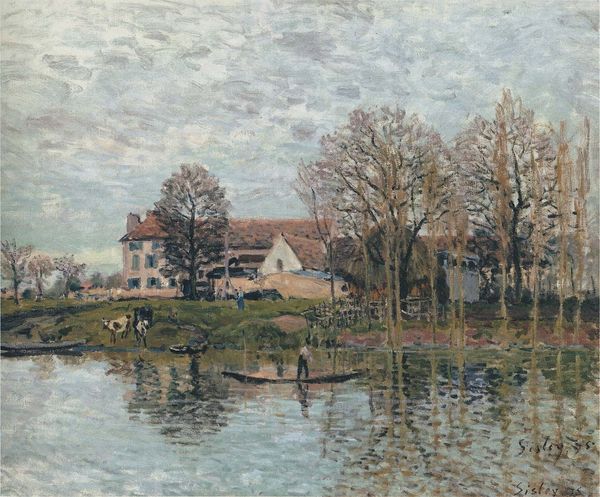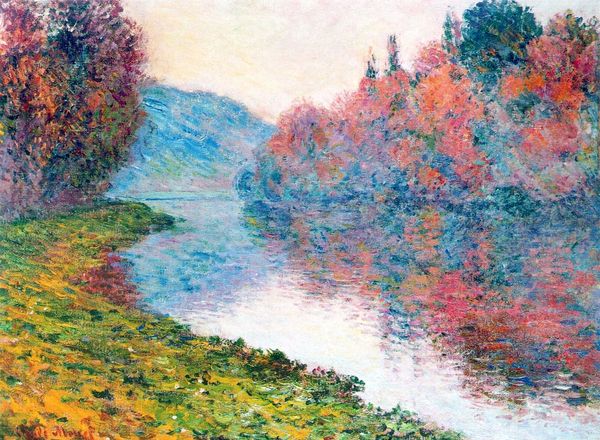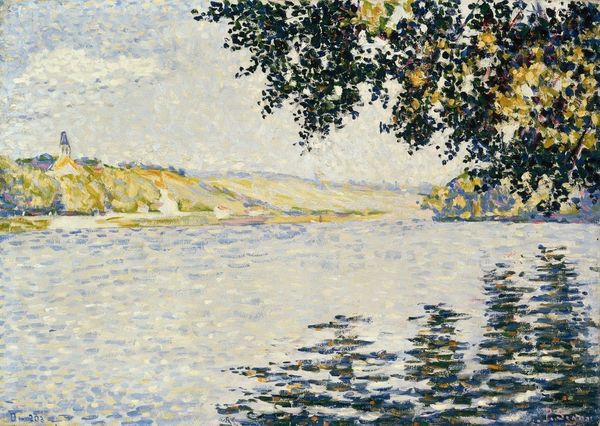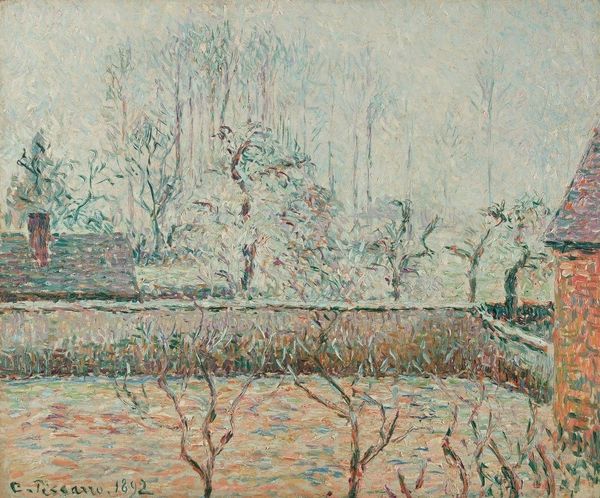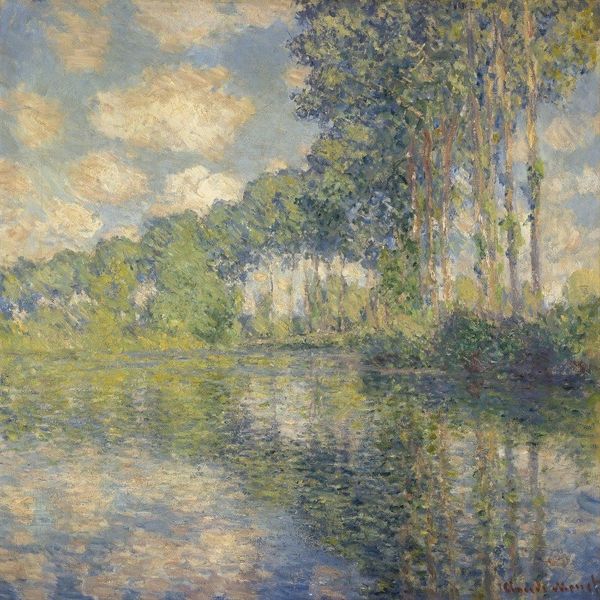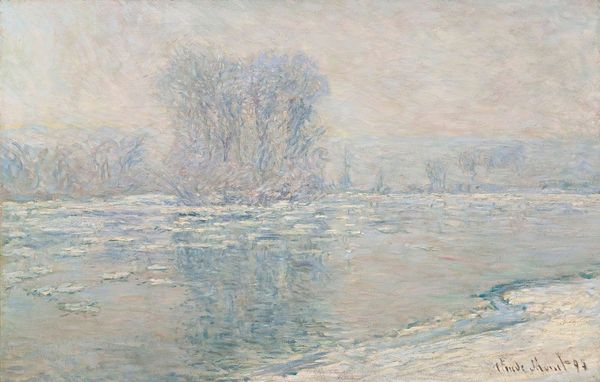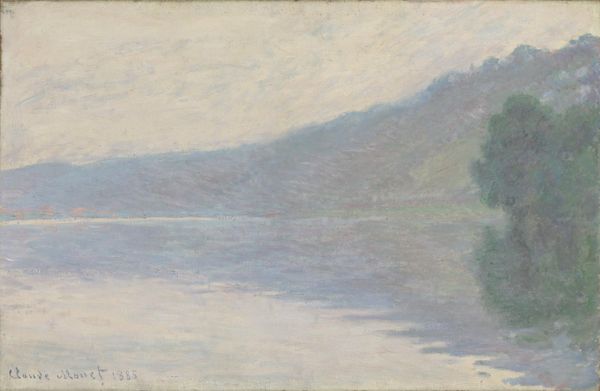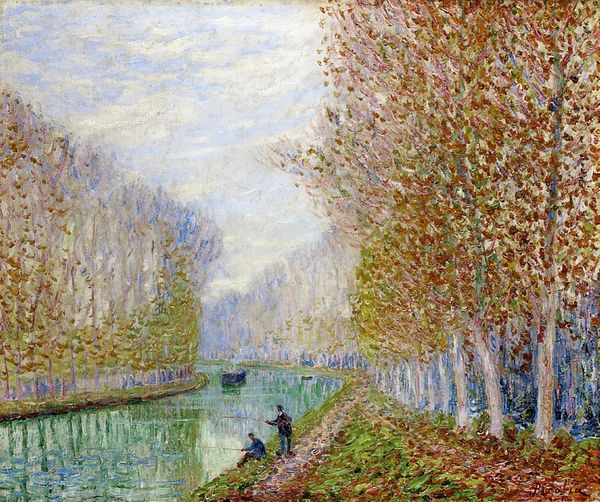
painting, plein-air, oil-paint, impasto
#
painting
#
plein-air
#
oil-paint
#
landscape
#
river
#
form
#
impasto
#
intimism
#
geometric
#
water
#
cityscape
#
post-impressionism
#
nature
#
sublime
#
realism
Copyright: Public domain US
Curator: Auguste Herbin's "Snow at Haut Isle," created in 1906, offers a glimpse into a specific moment and place during a particularly transformative time for art. Editor: My first impression is how remarkably tranquil it feels. The gentle blues and greens create such a calming, almost ethereal mood, don't you think? Curator: It's interesting that you find it tranquil, given Herbin's later engagement with more radical abstraction. At the time he painted this, he was living at la Ruche, the artist residence, and this was right on the cusp of major avant-garde movements in Paris. Editor: Yet, you can already see him playing with form and structure in a way that deviates from strict representation. Look at how the reflections on the water aren’t quite mirrored, more like fractured geometries. The impasto also gives a beautiful material presence, especially with the bare trees against the softer, snow-covered land. Curator: Exactly. His method shares something with pointillism, though he seems to want to evoke feelings over merely optical blending. And what does the snow communicate about society at that moment? Does it cloak and blanket the past, and set the stage for an unformed future? There's this dialogue between modern industrial change and rural existence at this time. Editor: The limited palette contributes to a very unified field. By repeating blues and greens in slightly different values, the artist flattens space. Even with depth cues, he denies complete illusionism by calling our attention to surface and pattern. Curator: That pull you speak of reminds me, of course, of Japanese prints that so captured the interest of many impressionists as a way to rethink what paintings are for and what art means at this pivotal moment of societal transformation and disruption of art traditions. Editor: It certainly gives us much to ponder regarding form versus content. For me, the subdued colours and geometric reflections evoke an unusual sensation, suspended between familiarity and abstraction. Curator: Agreed. Placing Herbin’s choices in context offers us a powerful case study for art's unique role at these critical moments of society's transitions.
Comments
No comments
Be the first to comment and join the conversation on the ultimate creative platform.
